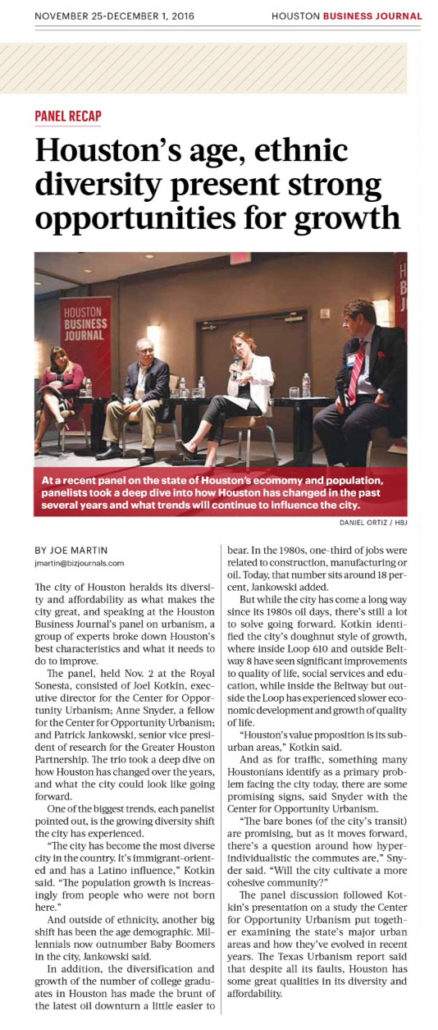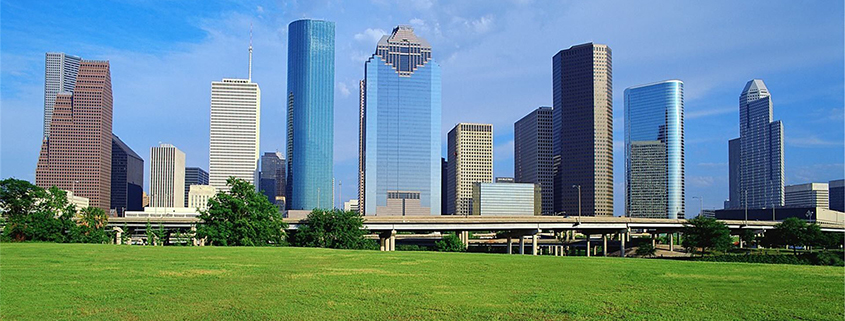Houston’s age, ethnic diversity present strong opportunities for growth
 The city of Houston heralds its diversity and affordability as what makes the city great, and speaking at the Houston Business Journal’s panel on urbanism, a group of experts broke down Houston’s best characteristics and what it needs to do to improve.
The city of Houston heralds its diversity and affordability as what makes the city great, and speaking at the Houston Business Journal’s panel on urbanism, a group of experts broke down Houston’s best characteristics and what it needs to do to improve.
The panel, held earlier this month at the Royal Sonesta, consisted of Joel Kotkin, executive director for the Center for Opportunity Urbanism; Anne Snyder, a fellow for the Center for Opportunity Urbanism; and Patrick Jankowski, senior vice president of research for the Greater Houston Partnership. The trio took a deep dive on how Houston has changed over the years, and what the city could look like going forward.
One of the biggest trends, each panelist pointed out, is the growing diversity shift the city has experienced.
“The city has become the most diverse city in the country. It’s immigrant-oriented and has a Latino influence,” Kotkin said. “The population growth is increasingly from people who were not born here.”
And outside of ethnicity, another big shift has been the age demographic. Millennials now outnumber Baby Boomers in the city, Jankowski said.
In addition, the diversification and growth of the number of college graduates in Houston has made the brunt of the latest oil downturn a little easier to bear. In the 1980s, one-third of jobs were related to construction, manufacturing or oil. Today, that number sits around 18 percent, Jankowski added.
But while the city has come a long way since its 1980s oil days, there’s still a lot to solve going forward. Kotkin identified the city’s doughnut style of growth, where inside Loop 610 and outside Beltway 8 have seen significant improvements to quality of life, social services and education, while inside the Beltway but outside the Loop has experienced slower economic development and growth of quality of life.
“Houston’s value proposition is its suburban areas,” Kotkin said.
And as for traffic, something many Houstonians identify as a primary problem facing the city today, there are some promising signs, said Snyder with the Center for Opportunity Urbanism.
“The bare bones (of the city’s transit) are promising, but as it moves forward, there’s a question around how hyper-individualistic the commutes are,” Snyder said. “Will the city cultivate a more cohesive community?”
The panel discussion followed Kotkin’s presentation on a study the Center for Opportunity Urbanism put together examining the state’s major urban areas and how they’ve evolved in recent years. The Texas Urbanism report said that despite all its faults, Houston has some great qualities in its diversity and affordability.
Joe Martin covers technology, money and law for the Houston Business Journal. Follow him on Twitter for more.
This article originally published at bizjournals.com



